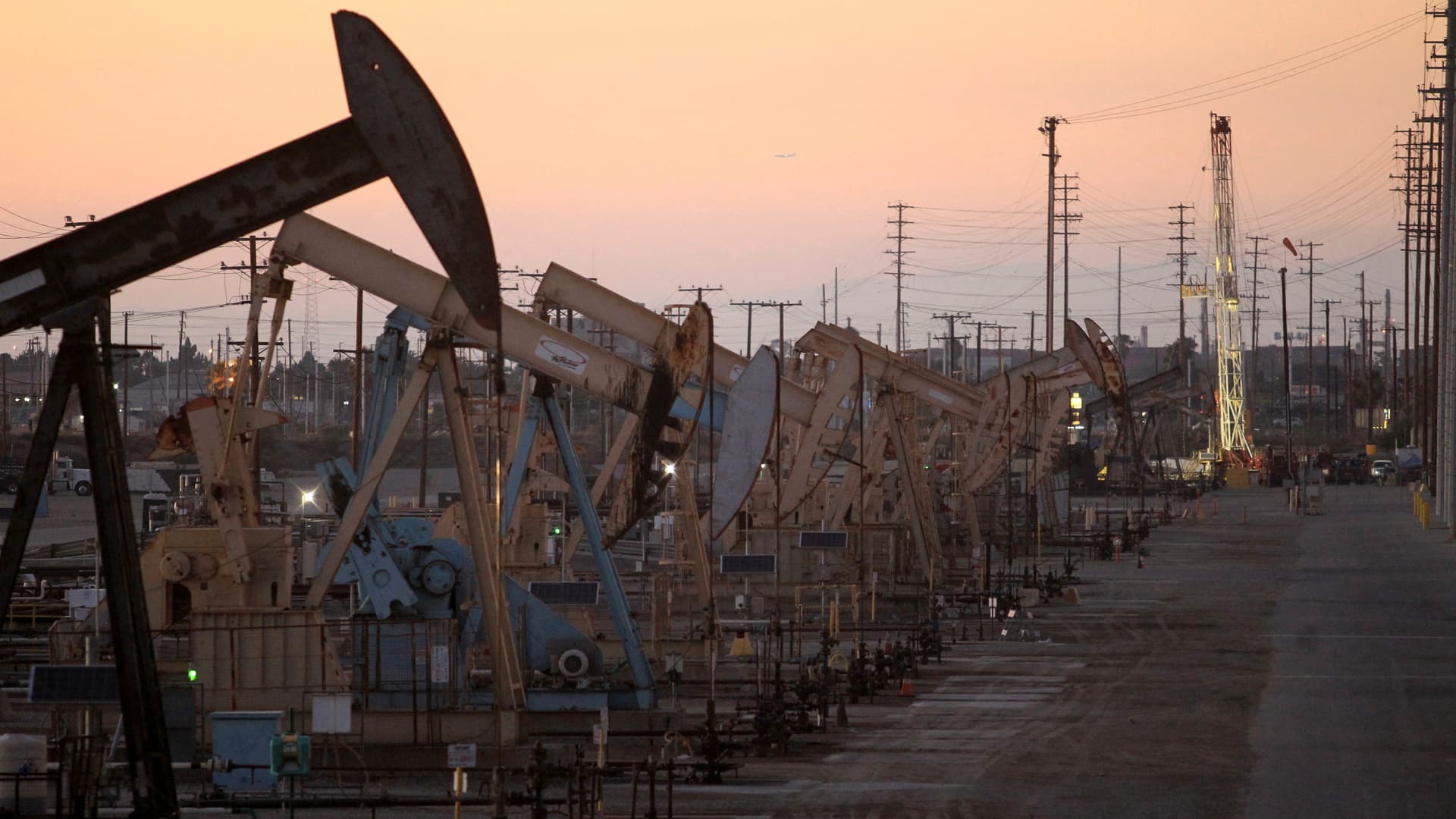Oil falls slightly as traders asses U.S. inflation data, OPEC demand outlook

Oil rig pumpjacks, also known as thirsty birds, extract crude from the Wilmington Field oil deposits area near Long Beach, California, on July 30, 2013.
David Mcnew | Reuters
Crude oil futures edged lower Tuesday as traders weighed the latest U.S. inflation data and OPEC’s demand outlook for the year.
The West Texas Intermediate contract for April lost 37 cents, or 0.47%, to settle at $77.56 a barrel. The Brent contract for May shed 29 cents, or 0.35%, to settle at $81.92 a barrel.
OPEC held to its forecast for 2024, with oil demand expected to grow by 2.2 million barrels per day, according to the cartel’s latest report. Crude supply outside OPEC is expected to grow by 1.1 million bpd this year, according to the report.
OPEC’s forecast implies an oil market deficit this year unless the cartel and its allies unwind production cuts of 2.2 million barrels per day. Those cuts will remain in place at least through the second quarter.
Inflation in the U.S., meanwhile, increased 0.4% in February and 3.2% from a year ago, according to the latest reading of the consumer price index. Though the monthly gain was in line with expectations, the annual rate came in slightly ahead of the 3.1% forecast.
Traders are closely monitoring inflation in the U.S. for signs of when the Federal Reserve will be in a position to cut interest rates. Lower rates typically stimulate economic growth, which fuels crude demand.
Federal Chairman Jerome Powell told Congress last week that the central bank is waiting for more data to indicate that inflation is moving sustainably at 2% before cutting interest rates. The market is expecting the central bank to implement the first rate cut in June.
WTI had taken a leg higher to $80 a barrel earlier in the month, but has since pulled back on renewed worries about demand in China and production in the Americas, particularly the U.S.
Prices at the pump have risen 9% since the start of the year with gallon of regular gas averaging $3.39 a gallon as of Tuesday, according to data from the motorist association AAA. Fuel prices typically rise as the spring and summer drive season draws closer.